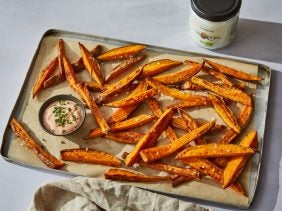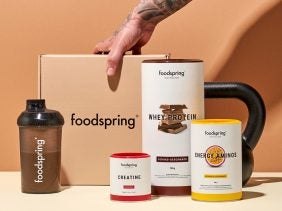What are the best sources of iron? We’ll tell you
 ©istetiana
©istetiana
Iron is a vital trace element for all of us and shows up in a range of foods. But which are the best sources of iron for you and your body?
Let’s Pump Some Iron
Since it’s an essential trace element, iron is indispensable for a functioning human body. Iron’s most important job is to carry oxygen as part of your red blood cells. These cells are one of the largest iron stores in your body. The human body cannot produce this mineral by itself, which is why you need to take it in through your diet.
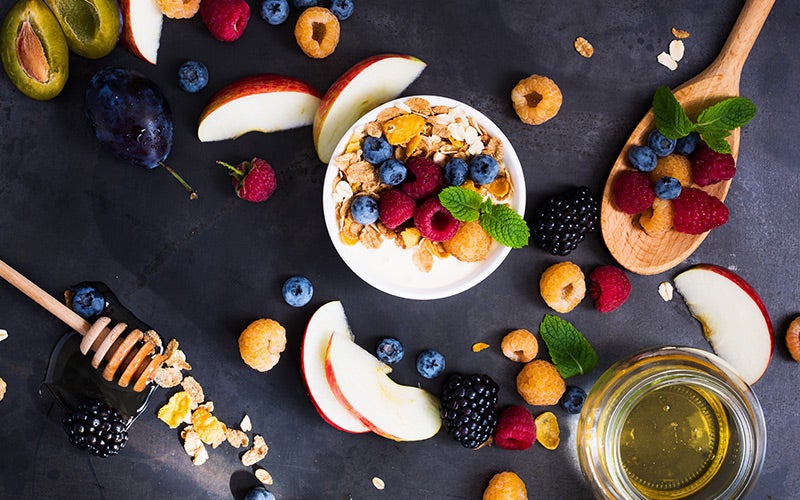
Tip: If you have a packed schedule, fruit and vegetables can fall by the wayside pretty quickly. With our Daily Vitamins, it’s easy to make sure you get your daily supply of all essential vitamins in just two capsules per day.
Check out our daily vitamins here
The NHS recommends 8.7mg per day for men over 18 and women over 50, and 14.8mg per day for women aged 19 to 50 as daily reference values for iron.
What can cause an iron deficiency?
Different processes keep iron use and supply in your body in balance. Certain phases of life, however, can lead to an iron deficiency. Children, teenagers, and people who menstruate are more likely to be iron deficient than other groups. Vegetarians and vegans also tend to not consume much iron per day, which may lead to an iron deficiency unless they take iron supplements. It’s best to take iron supplements with vitamin C because this vitamin helps iron absorption.
Sources of Iron in Foods
Dietary iron comes in two forms: heme and non-heme iron. Red meat, some types of fish, and eggs all contain a lot of heme iron, which your body absorbs readily. Good sources of non-heme iron for vegetarians and vegans, and everyone else, include soy products, fennel, legumes, nuts, dried apricots, and green, leafy vegetables. Iron-fortified foods like breakfast cereals or other non-heme iron sources should be eaten along with vitamin C to increase the amount of iron that’s absorbed.
Iron-rich foods table
The table below provides a good overview, but we’ve also put together a more detailed set of lists that you can print out for reference. With all these choices, you’re sure to find something with enough iron that you like and can turn into a tasty meal to avoid an iron deficiency even if you’re at high risk!
| Food (per 100g) | Iron content (in mg) |
| Black pudding | 30 |
| Pork liver | 18 |
| Wheat bran | 15 |
| Pumpkin seeds | 11.2 |
| Dried beef (Bresaola) | 10 |
| Dried soy beans | 9.7 |
| Pine nuts | 9.2 |
| Millet flakes | 9 |
| Dried lentils | 8 |
| Wheat germ | 7.6 |
| Veal liver | 7.5 |
Iron-Rich Recipes
For a little inspiration, we’ve selected three of our most delicious vegetarian recipes that are also high in iron.
Goji Berries Power Smoothie
Start your day with a boost of energy with our Goji Berry Power Smoothie. This smoothie is done in minutes and ready for you to drink on the road or at work.
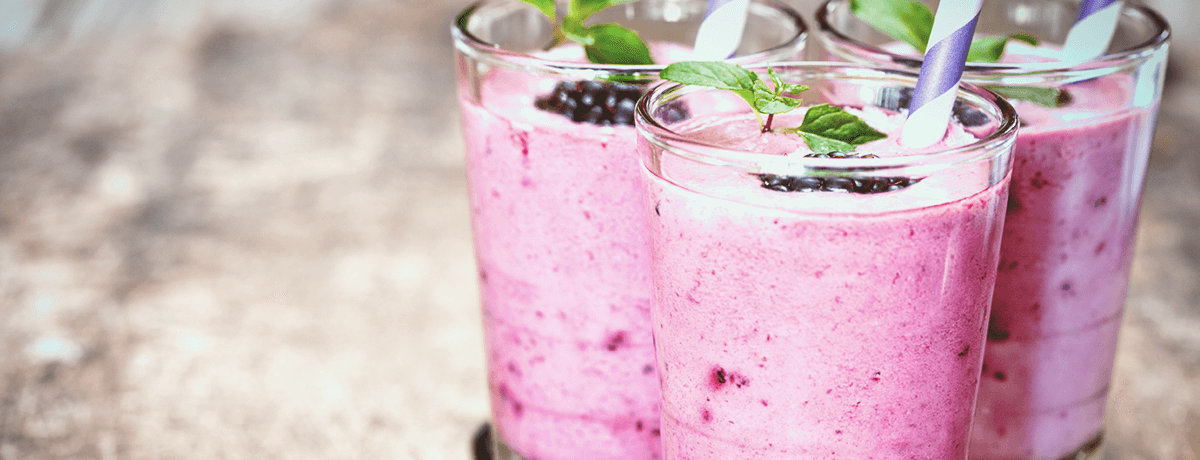
Asian Cauliflower Salad with Fennel
Most people treat fennel like an afterthought, but not in our foodspring kitchen! Because we know that this vegetable is full of important nutrients, including a healthy dose of iron per salad.
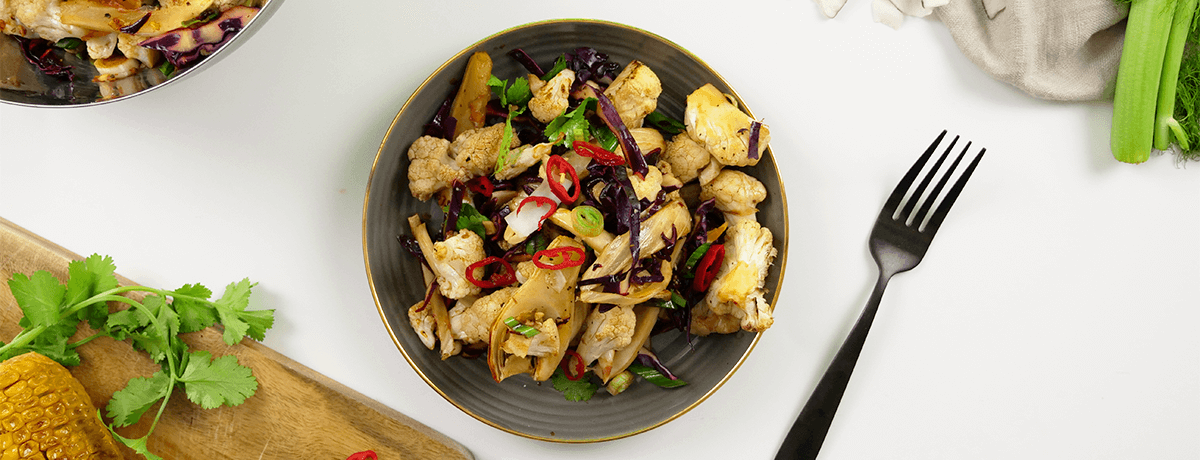
Hummus
Hummus is not only incredibly delicious, but also rich in vegetable protein. And on top of that, chickpeas are one of the top plant-based sources of iron. Serve it with vegetables for a snack or our Protein Bread for a light meal.
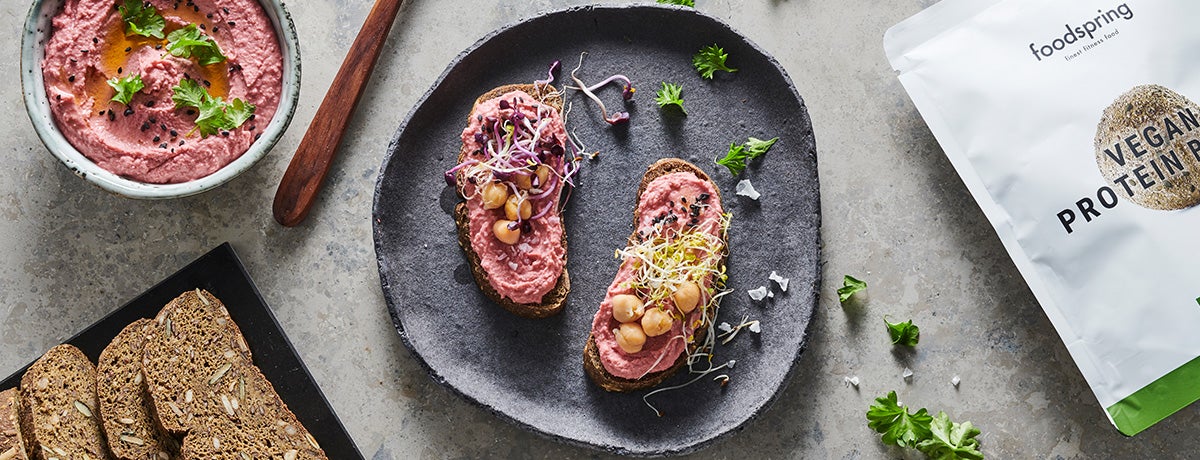
Conclusion
- Iron is an essential trace element.
- It makes sure oxygen is transported throughout your body and is why your blood is the color red.
- The recommended daily intake of iron for adults is 8.7mg for men and 8.7-14.8mg for women.
- Meats have the most iron per 100g, but legumes, nuts, and seeds are also good sources.
Sources for this article
We at foodspring use only high-quality sources, including peer-reviewed studies, to support the facts within our articles. Read our editorial policy to learn more about how we fact-check and keep our content accurate, reliable, and trustworthy.


























